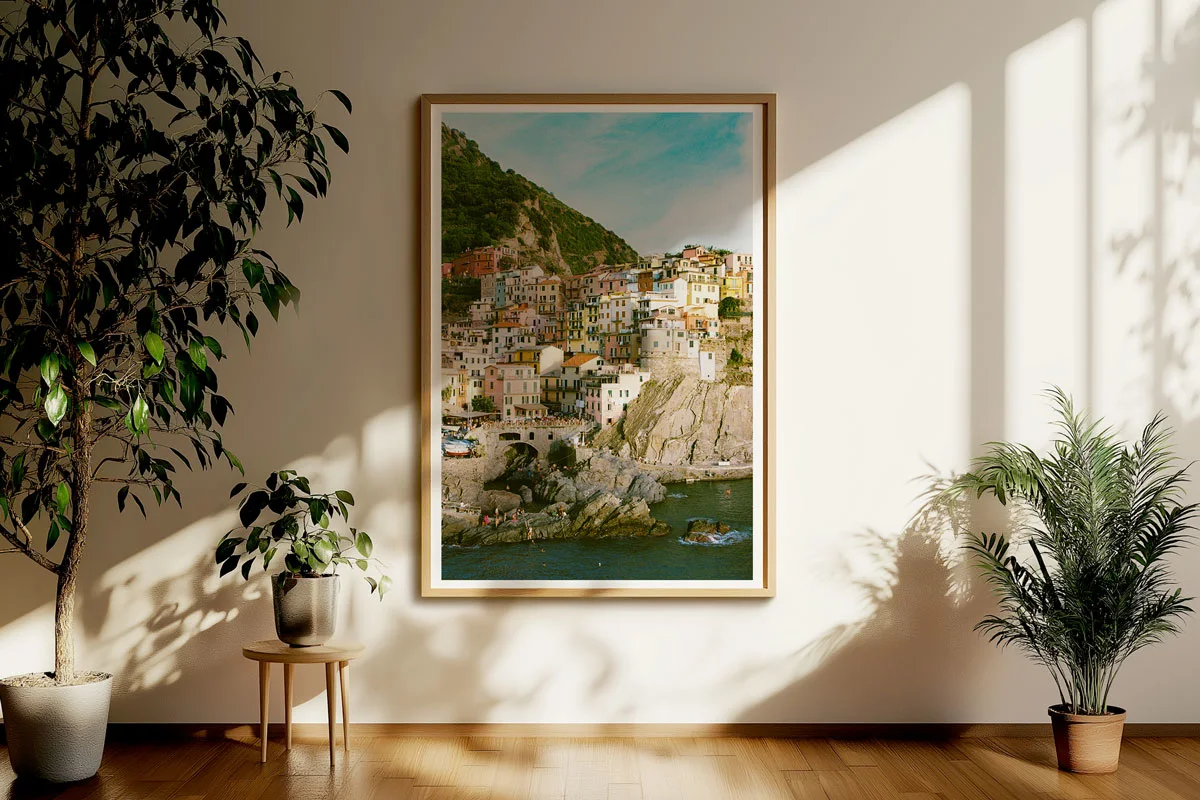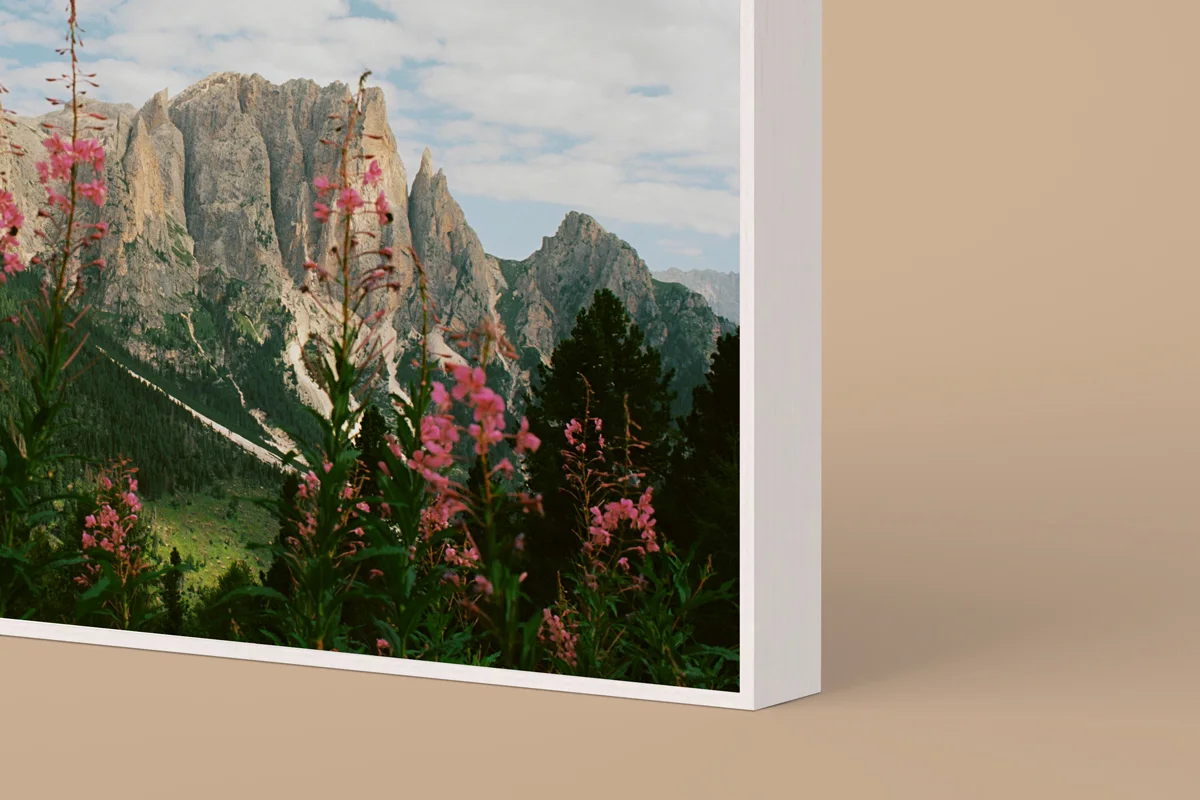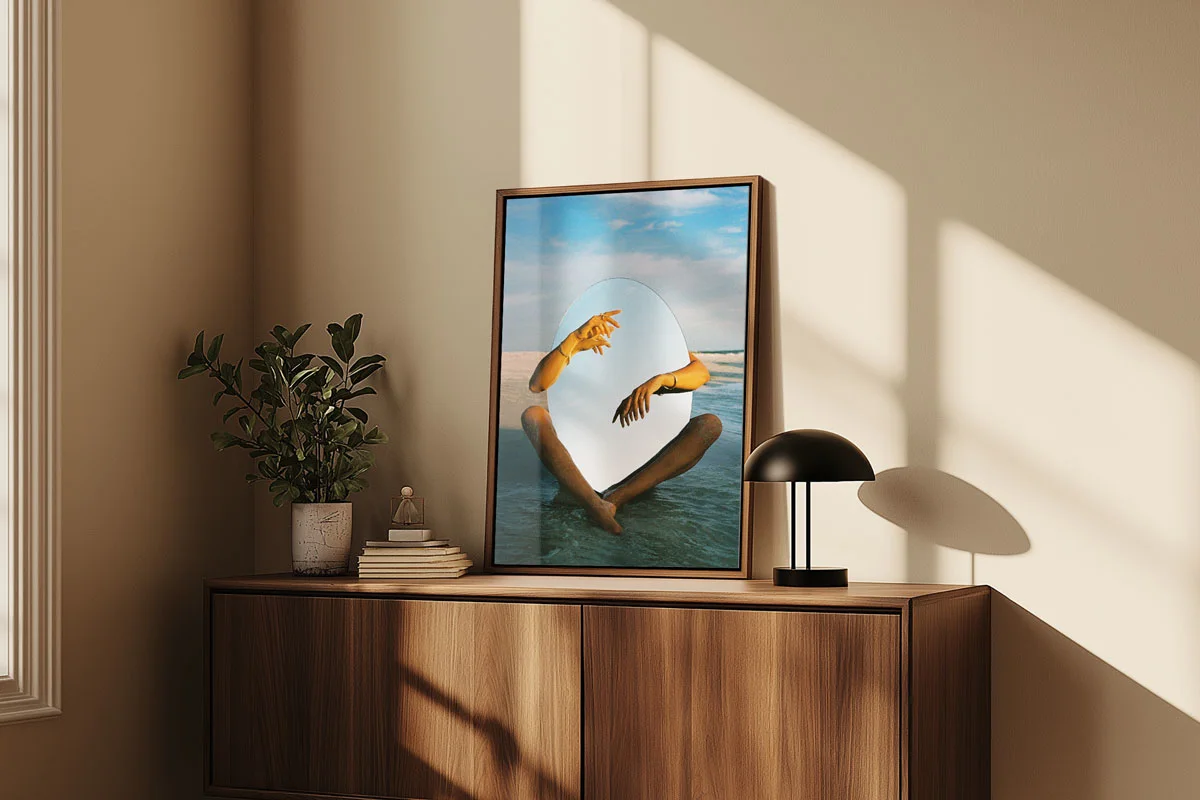Between wildflowers and film rolls – Interview with Tiffany
Tiffany Newman
Tiffany Newman is a travel, adventure, and lifestyle photographer with a special love for analog photography. Raised in the Appalachian Mountains and later influenced by life in the rainforests of Maui, she draws her creative inspiration from nature and various artistic forms of expression such as painting, screen printing, and dance. In this interview, she talks about how she got into photography as a kid, why a hailstorm in the Dolomites led to her favorite pictures, and what advice she has for young photographers who want to develop their own style.

Interview with Tiffany Newman
Can you tell us a little bit about how you became a photographer?
Photography has been a part of my life for as long as I can remember. My dad ran a photography business when I was little, so cameras were always a part of my world and as soon as I developed fine motor skills, I had a camera in my hands.
Please share something about your images. What is your special interest? How do you choose the colors, composition, themes etc.?

With its natural warmth, our bestseller “Hamburg” frames the large format behind acrylic and perfectly complements the atmosphere of light and colors.
I feel most inspired by natural landscapes and exploring new places. My eye is often drawn to capturing landscapes with something interesting in the foreground, which tends to be wildflowers, animals, quaint homes I find along my adventures. I’m often drawn to the colors green and blue because to me, they symbolize life.
How do you get inspired? And what inspires you the most? Films, books, or magazines? Orwhat surrounds you?
Oh wow, I love this question! I studied art history in college, so I find a lot of joy in analyzing the composition and layout of paintings. I also love visiting fine art museums and watching movement artists perform. There’s something mesmerizing about creating art with the body. Each shape that dancers and performers make becomes a fleeting composition, and that often inspires my own visual work. But more than anything, I believe inspiration is everywhere, if you choose to see it.
Is there one image of yours that holds a particularly special story or memory?

Contrasts bring the motifs into balance: the ArtBox made of white maple creates a strong spatial effect, while aluminum Dibond provides modern lightness.
I was hiking in the Dolomites with a group of ten friends, heading up to an alpine hut when a perfectly sunny day suddenly turned into a hailstorm. Of course, it was the one day I didn’t pack rain gear. I sprinted toward the hut, laughing through the freezing rain. Amid the chaos, my SLR film camera stopped working, leaving me with only my little point-and-shoot for the hike back down the next day. With soggy shoes and low expectations, I ended up capturing some of my favorite images I’ve ever taken.
You work almost exclusively with analog film. What does this choice mean for your creative process? And what advice would you give digital photographers who are curious about shooting on film?
What I love most about film photography is how it encourages me to slow down, stay present, and truly connect with my surroundings. I used to work a high-volume digital photography job, shooting thousands of images a day. Eventually, I burned out and put my camera down for years. Getting my first film camera brought the joy back. Shooting film feels like I’m truly capturing the essence of a moment, physically imprinting time onto a negative. It feels like alchemy.
You've captured such a wide range of places — from the Dolomites to Costa Rica. What are your top tips for travel photographers looking to find authentic moments off the beaten path?

Talking to locals of the area is forever the best way to find the most authentic moments, best food in the area, and unique perspectives and stories. People are generous with their knowledge when you show genuine curiosity and respect.
When it comes to printing your work, what role does the physical print play for you? What do you pay attention to when choosing materials, formats, or paper types?
Bringing a piece from the digital realm into the physical world is such a meaningful part of the process. One thing I’ve learned is the importance of color management, making sure your digital files are properly prepared for print so the tones and hues remain true to your vision.
What one key lesson you’d share with emerging photographers who want to develop a unique visual language of their own?

The shadow gap of the Basel frame in walnut gives the photo print a floating effect. Glossy acrylic glass enhances the brilliance of the colored areas.
Great question. In the beginning, I captured a lot of everything, including nature, friends, family, strangers, animals, cities, and buildings. I also experimented with all kinds of film stocks and camera models. Through all that play and exploration, I gradually discovered what felt most like me: a handful of favorite film stocks, a couple of cameras I feel most inspired to create with, and a post-scan editing process that helps keep my color grading consistent and aligned with my vision.
My biggest advice is to experiment relentlessly. Create, create, create, and then create some more. Your visual language will begin to take shape through repetition, curiosity, and intuition. And even once you find a flow that feels comfortable, the journey doesn’t end there. I’m constantly refining my eye, evolving my taste, and deepening the way I see the world. It’s a lifelong process, and that’s what keeps it exciting.
What else should we know about you? Maybe give us a short profile of yourself (name, age, place of birth/residence, education, profession, citizenship - whatever you want).
My name is Tiffany Newman and I’m a travel, adventure, and lifestyle photographer. Growing up surrounded by the Appalachian Mountains, I found endless inspiration in nature. Later, living in the lush rainforests of Maui, Hawai’i deepened my connection to the natural world and reignited my passion for photography. My journey as an artist has taken me through various mediums, including drawing, painting, and screen printing, but film photography is the creative outlet that truly sets my soul on fire.
WhiteWall Product Recommendations
You might also like these articles:
Submitted by WhiteWall Team
Interview with Edouardo Salmon: “My heart definitely beats for aerial photography”
Meet Edouard Salmon – travel photographer with a view from above. In this interview, he talks about his passion for drone photography, strong color contrasts, and minimalist compositions. Discover how everyday scenes are transformed into impressive works of art.
Submitted by WhiteWall Team
Travel photography with Maurice Klaiber
Maurice Klaiber is a travel photographer who captures the full beauty of nature and brings the emotions behind his subjects to life. With a minimalist style and authentic colors, he tells the unique stories of the places he discovers on his travels.
Submitted by WhiteWall Team
Surreal & mesmerizing: Icelandic photographs by Brynjar Agústsson
In the interview, Brynjar Ágústsson talks about the importance meditation plays in his way of photographing, the principles that guide him, and why psychoanalyst Carl Gustav Jung is one of his greatest sources of inspiration.








